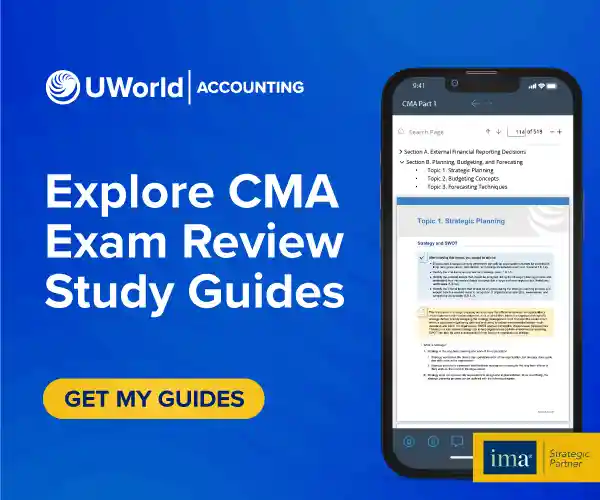Choosing the right professional qualification can define your career trajectory, especially in management accounting. If you’re an ambitious finance professional evaluating your options, the debate of US CMA vs India CMA is critical. Both certifications open doors to rewarding careers, but the differences in global recognition, exam structure, costs, and career outcomes are significant. This page provides an in-depth, unbiased comparison to help you confidently decide which path suits your professional goals, budget, and future aspirations. Let’s explore every angle so you can choose wisely.
Why Compare US CMA vs India CMA?
In today’s interconnected global economy, finance professionals often pursue credentials that enhance technical expertise and international mobility. That’s why the question of US CMA vs India CMA has grown increasingly relevant among aspiring accountants in India, the Middle East, the US, and beyond.
The significance of this choice lies in:
- Globalization of Finance Roles: Companies operate across borders, demanding professionals with globally recognized qualifications.
- Diverse Career Goals: Some professionals seek global exposure; others prefer thriving domestic opportunities.
- Cost and Time Considerations: The two paths differ vastly in investment and timeline.
- Changing Job Markets: Regulatory changes and evolving business landscapes impact the demand for each credential.
Understanding the difference between US CMA and Indian CMA can help you align your studies with your unique career ambitions, whether you dream of working in multinational corporations or becoming an expert in Indian cost and management regulations.
Ultimately, the goal isn’t just earning letters after your name but maximizing career satisfaction, income potential, and personal fulfillment. Let’s dive deeper into how these two respected certifications compare.
Quick Comparison Table: US CMA vs India CMA
Before we unpack the details, here’s a snapshot comparison:
| Factor | US CMA | India CMA |
|---|---|---|
| Governing Body | Institute of Management Accountants (IMA) | Institute of Cost Accountants of India (ICMAI) |
| Exam Structure | 2 Parts | 3 Levels (Foundation, Intermediate, Final) |
| Total Duration | 6 months – 2 years | 3 - 4 years |
| Total Cost | $1,000 - $2,500 | ₹50,000 – 80,000 |
| Global Recognition | Worldwide | Primarily India, some international recognition |
| Average Salary | $60,000-$150,000 | ₹6-20 lakhs |
| Exam Language | English | English and Hindi (final) |
| Exam Frequency | 3 windows per year (flexible scheduling) | Fixed exam schedule (less flexible) |
| Membership / Renewal | Annual IMA membership + CPE required | Annual ICMAI membership + CPE required |
This table provides a high-level overview, but each difference significantly influences your future. Let’s explore them in depth.
What is US CMA?
The US CMA (Certified Management Accountant) is a globally recognized certification awarded by the Institute of Management Accountants (IMA), headquartered in the United States. It focuses on management accounting, financial planning, analysis, control, decision support, and professional ethics.
US CMA Benefits Include:
- Global Recognition of US CMA: Recognized in over 100 countries, ideal for those seeking international careers.
- Faster Credentialing: Many candidates complete both parts in under a year.
- High Earning Potential: The difference between the salary of the CMA US and CMA India can be substantial, with US CMAs often commanding 30-50% higher salaries, especially in global firms.
- Flexible Eligibility: Bachelor’s degree holders can attempt exams even before acquiring full work experience.
Career Paths:
- Financial Analyst
- Cost Analyst
- Finance Manager
- FP&A Specialist
- CFO
US CMA is an excellent choice for candidates eyeing MNCs, consulting firms, or global finance roles.
What is India CMA?
The India CMA (Cost and Management Accountant) is governed by the Institute of Cost Accountants of India (ICMAI). It emphasizes cost management, auditing, taxation, regulatory compliance, and financial management, tailored for Indian industries and statutory requirements.
Key Benefits of India CMA:
- Comprehensive coverage of Indian financial laws, tax systems, and industry-specific costing.
- Highly respected within India, particularly in manufacturing, taxation, and regulatory sectors.
- Cost-effective compared to international certifications.
Career Paths:
- Cost Accountant
- Internal Auditor
- Tax Consultant
- Government Department Accountant
- Finance Manager in Indian enterprises
India CMA suits professionals seeking stable, rewarding careers in the Indian corporate or public sector. Whether you aspire to a career across borders or prefer a robust domestic profile, understanding the essence of these certifications is the first step. Let’s move from definitions to comparing specific differences that matter for your future.
Key Differences Between US CMA and India CMA
Choosing between the US CMA and India CMA goes beyond ticking boxes on a comparison table; it’s a decision that will shape the next decade of your professional life. While both certifications open doors in finance and accounting, they do so in dramatically different ways. The differences are substantial in how quickly you can earn the credential, where you’ll work, and how much you’ll earn.
In this section, we’ll dig deeper than surface-level facts and explore the real-life implications of each key difference. You’ll see the stats and understand how these factors impact your day-to-day career, lifestyle, and long-term goals.
Let’s break it down metric by metric.
Duration and Structure:
While the table shows timelines, it doesn’t reveal what those timelines feel like. The US CMA is designed for speed and flexibility, while the Indian CMA is a more traditional academic journey. For many professionals, the time investment determines how quickly they can pivot careers or increase earning potential.
US CMA Highlights:
- Fast-track potential: Motivated candidates can finish in 6–12 months, even while working full-time.
- A two-part exam structure means fewer exams to juggle and less burnout risk.
India CMA Highlights:
- Three-tiered structure (Foundation, Intermediate, Final) spreads over ~3–4 years.
- Requires managing multiple subjects simultaneously at each level.
If you’re seeking a quick boost to your career, the US CMA’s shorter timeline is a big advantage. The India CMA, however, offers a more thorough, academic deep dive for those not in a rush.
Eligibility Criteria:
Your academic background is another critical filter for comparing the US CMA to India CMA. Both certifications cater to different stages of a candidate’s journey.
US CMA:
- Requires a bachelor’s degree (any stream) from a recognized institution.
- No prior work experience is needed to attempt exams, but you must complete 2 years of relevant work experience before getting certified.
- Ideal for graduates already in the workforce seeking specialization.
India CMA:
- Open to students directly after Class 12 (10+2).
- Graduates can skip the Foundation stage and enter at the Intermediate level.
- Offers a pathway for students to begin their professional accounting journey earlier.
India CMA is accessible to students right out of school, making it a popular choice for younger aspirants. US CMA is more tailored to those who’ve already completed a degree or are working professionals.
Exam Format and Difficulty:
Both exams test accounting and finance knowledge but in very different ways. Understanding exam style is crucial because it impacts how you study, how much time you’ll need, and how comfortable you feel during exams. Pairing it with a study plan can help you structure your preparation.
US CMA Exam Style:
- Computer-based testing worldwide.
- Each part has 100 MCQs and 2 essay scenarios testing real-life problem-solving.
- Focuses heavily on practical application, decision-making, and business scenarios.
- The exam can be taken in English only.
India CMA Exam Style:
- A mix of objective and subjective papers, especially at the Intermediate and Final levels.
- Broader syllabus, including deep dives into Indian laws, tax codes, and regulatory topics.
- Exams are offered in English, Hindi, and regional languages.
If you prefer application-based problem-solving in a modern exam format, the US CMA may feel smoother. India CMA may be a better fit if you’re comfortable with theoretical writing and a traditional academic approach.
Career Scope and Salary:
Perhaps the most significant practical difference between US CMA vs India CMA lies in where you’ll work and how much you’ll earn. Your professional aspirations should strongly influence this choice.
US CMA Career Scope:
- Strong global demand, especially in MNCs, consulting firms, and shared service centers.
- Positions often involve Financial Analysis, Budgeting and Forecasting, and Business Strategy.
- US CMAs earn about an average of 50% more than their Indian counterparts, especially in MNCs.
India CMA Career Scope:
- Highly respected in Indian manufacturing, taxation, cost auditing, and government departments.
- Many roles involve Statutory Cost Audits and Compliance with Indian tax and Corporate laws.
- Salary growth is solid domestically but doesn’t match global premium levels.
If global mobility and high salary growth appeal to you, the US CMA has a clear edge. For those who prefer a stable and respected career in India, the Indian CMA remains a powerful choice.
Global Recognition:
One of the biggest distinctions in the difference between US CMA and Indian CMA is how far your credential carries you geographically.
US CMA Recognition:
- Respected globally across North America, the Middle East, Europe, and Parts of Asia.
- Often required or strongly preferred in senior finance roles at global companies.
- Adds significant credibility when applying for visas or overseas jobs.
India CMA Recognition:
- Primarily recognized in India, with acceptance in some Middle Eastern and African countries.
- Overseas employers often prefer US CMA or other global designations for management accounting roles.
If you are inclined to work abroad, the global recognition of the US CMA is a game-changer. India CMA remains unmatched for India-specific roles, but its global value is limited.
While this offers a valuable snapshot, the actual weight of these differences comes alive when viewed through your own goals and context. Whether it’s the timeline, exam style, or career aspirations, your choice between US CMA vs India CMA should reflect the life you want to build, not just statistics.
Which is Better: US CMA or India CMA?
Whether the US CMA or India CMA is “better” depends entirely on your goals, budget, career vision, and preferred work environment. The table below breaks down the advantages of each certification across the most critical decision factors. Use this as a practical guide to identify which path aligns best with your professional future.
| Criteria | US CMA Advantages | India CMA Advantages |
|---|---|---|
| Global Career Opportunities |
|
|
| Salary Potential |
|
|
| Cost of Qualification |
|
|
| Duration to Completion |
|
|
| Preference in MNCs |
|
|
| Government Sector Opportunities |
|
|
There’s no absolute winner in the debate of US CMA vs India CMA. The “best” certification is the one that fits your unique ambitions and circumstances. If you’re aiming for global roles, higher salaries, and a fast-track credential, the US CMA is an excellent investment. If you focus on building a robust career in India, especially in manufacturing, taxation, or government, India CMA offers immense value and local recognition. Whatever path you choose, ensure it aligns with your long-term vision and the professional lifestyle you aspire to achieve.
Deciding Which CMA to Opt For
Now that you know the strengths of both US CMA vs India CMA, the next step is to decide which path fits your career vision. This choice isn’t simply about exam fees or syllabi, it’s about the future you want to build. The best way to decide is to think through your personal goals, work preferences, and the kind of professional life you want a few years from now. Here’s a quick checklist to help you finalize your decision. If you answer YES to most statements in either column, that’s likely your path.
| US CMA | India CMA |
|---|---|
| I want to work abroad or for multinational companies. | I plan to build my career entirely in India and countries that recognize the Indian CMA. |
| I’m ready to invest more money upfront for higher global ROI. | I have a tight budget for certification costs. |
| I prefer a shorter study timeline (6–12 months). | I’m fine with a longer, multi-year study path. |
| Global recognition matters to me for future roles. | I want a credential deeply connected to Indian laws and industries. |
| I want to specialize in management accounting and financial roles globally. | I want to work in cost and management accounting and need a local foundation. |
Your choice between US CMA and India CMA should reflect where you want to work and who you want to become. Consider your career goals, the roles that inspire you, and the lifestyle you envision. Once you know your destination, the right CMA path becomes clear.
No matter which you choose, remember that success depends on solid preparation. Explore how UWorld’s CMA Prep Courses can help you confidently pursue your chosen path and achieve your professional dreams.
Get My Study Guides: From free trial, resource pages, blogs, or product tour pages
Support and Resources for CMA Preparation
Regardless of your choice, becoming a CMA demands a thorough preparation. UWorld offers robust study resources, including:
- Comprehensive CMA QBanks covering all exam topics.
- Realistic exam simulations to build confidence.
- Detailed performance analytics.
- Accessible mobile apps for on-the-go learning.
For US CMA candidates, UWorld’s adaptive learning platform delivers:
- In-depth explanations for every answer choice.
- Easy practice to boost writing skills for exam scenarios.
- Smart tracking of weaker areas through performance analytics.
- Access to online course, QBank, live classes, and self-paced learning.
Even for India CMA aspirants, strong conceptual clarity and practice are vital. While UWorld focuses on the US CMA, foundational principles in management accounting are universally beneficial, as:
- Study support is primarily through Indian coaching institutes.
- Finding the best prep resources is essential for aspirants.
- Limited flexibility due to fixed exam cycles.
Hence, we’ve tailored the best CMA prep course available in India for your market and accelerated your path to success. Your chosen path may differ, but preparation quality should never be compromised. Invest in the right resources to secure your certification and the confidence to excel in your career.
Conclusion: Your CMA Journey Starts Here
Choosing between US CMA vs India CMA is more than picking a course; it’s choosing the trajectory of your life. The US CMA offers global mobility, higher salaries, and a faster route to international careers. The India CMA provides exceptional depth in Indian regulations, cost accounting, and domestic corporate roles.
Evaluate your career goals, budget, time horizon, and personal interests. Whether your ambition soars across borders or stays rooted in India’s dynamic economy, your CMA credential will shape your future. Let this guide be the stepping stone to an informed, confident decision. And remember, your success story begins with the right preparation.
Frequently Asked Questions (FAQs)
Can I do both US and India CMA certifications?
Some professionals complete the India CMA first (lower cost, comprehensive foundation) and then pursue US CMA for global opportunities. This approach requires a significant time investment but provides the best of both worlds.
What is the main difference between the US CMA and the Indian CMA?
US CMA focuses on global financial management, faster completion, and global recognition, while Indian CMA emphasizes Indian laws, cost audits, and local regulatory compliance.
How much does US CMA cost compared to an Indian CMA?
US CMA costs about USD 1,000–2,500, whereas India CMA costs approximately ₹50,000–₹1 lakh overall, making it more affordable.
Can I do US CMA after Class 12 like the Indian CMA?
No, US CMA requires a bachelor’s degree. India CMA can start after Class 12, allowing earlier entry into the accounting profession.
References
- Institute of Management Accountants. (n.d.). IMA | Institute of Management Accountants. https://www.imanet.org/
- The Institute of Cost Accountants of India. (n.d.). The Institute of Cost Accountants of India. https://icmai.in/icmai/





